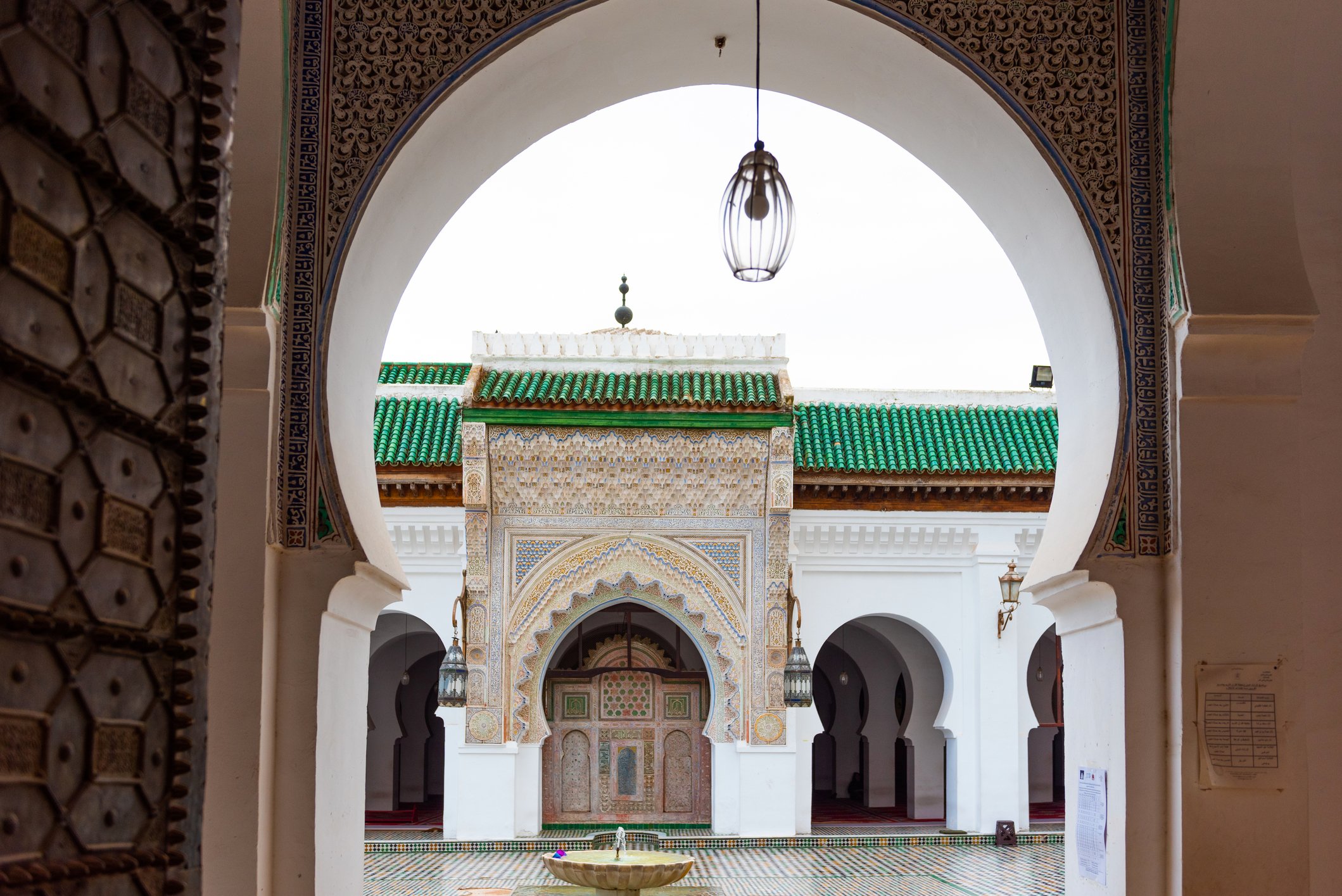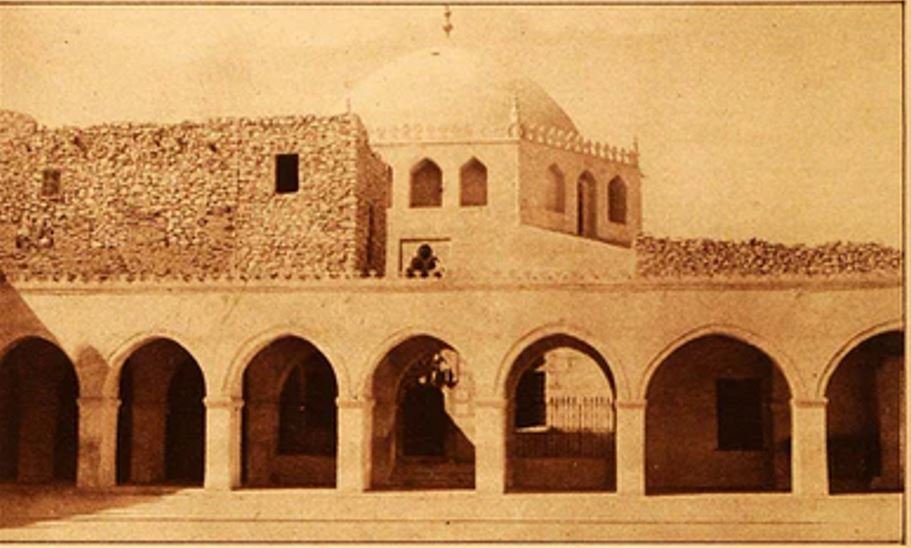THE SENUSSI ORDER
The Senussis: A Sufi Order
The Senussi Order, otherwise known as the ‘Sanusiya’, or ‘Sanusi’ is an Islamic religious and political order. It also refers to the tribal clan prominent in Libya and neighbouring regions.
The Senussi are a conservative Sufi order of Sunni Islam: for clarity, Sufis are Muslims who adhere to certain Sufi 'tariqas’ or ‘ways’ of practice, and have personal spiritual and ascetic values (the name ‘Sufi’ deriving from ‘wool’, a reference to the simple robes traditionally worn by various Sufi orders). The Sufis sought a spiritual connection with the prophet Mohammad, through the study and understanding of his life and teachings and also an imitation of his actions and deeds1. The majority of Sufis are Sunni, although some are also of the Shia Order.
The Foundation of the Senussi Order
The Senussi Order was founded in 1837, in the city of Mecca, Saudi Arabia, by Sayyid Muhammad ibn Ali al-Sanusi, an Algerian born tribal leader and theologian, later to become known as The Grand Sanusi. The term ‘Sayyid’ in his name signifies that he was a descendant of the Prophet Mohammad2.
Sayyid Muhammad ibn Ali Al-Sanusi, was born in al-Wasita near Mostaganem, in modern day Algeria. He was a Walad Sidi Abdallah tribesman, who claimed descent from the Islamic prophet Muhammad. Al-Sanusi studied at the University of al-Qarawiyyin in Fez, and was a local sharif3.
Al-Sanusi left Algeria in the early 1800’s and travelled to Fez in Morocco, to further his studies of Islam, after which he chose to promote increased unification amongst Muslims and the return of a more basic, strict form of Islam. He then left Fez, travelling across North Africa to spread his message, passing through Qabis, Tunisia and then on to Tripoli, Misrata and Benghazi in Libya. Throughout his travels he preached and sought to convert individuals, including those from the Amazigh tribes4.
In 1824, Al-Sanusi moved to Cairo to study at the Al Azhar University. However, with the passage of time, Al-Senussi became outspokenly critical of the government of Muhammad Ali of Egypt, and also of the Egyptian Islamic scholars, known as the Ulama5. Due to his criticisms, he was met with increased resistance from the Ulama, who branded him as an ‘unorthodox’ Islamic practitioner and issued a fatwa against him6.
Founder of the Senussi Order: Muhammed Ibn Ali Senussi, Wikimedia Commons.
University of al-Qarawiyyin in Fez
Al-Sanusi’s Time in Mecca
In 1828, Al-Sanusi left Egypt to journey to the Hijaz area of Saudi Arabia, in which the city of Mecca, the birthplace of the Prophet Mohammad, is located. There he continued his studies for the next six years, often making pilgrimages to the city of Medina where the Prophet Mohammad was temporarily exiled and eventually laid to rest7.
In 1829, Al-Sanusi returned home to Algeria, where he remained until 1833, when he again visited the Hijaz region, accompanied by a considerable number of disciples. During this second period in Mecca, he studied under various Shaikhs, becoming closest with Sayid Ahmad bin Idris al-Fasi, head of the Qadiriyya, a well known Sufi mystic order, who had also travelled to Mecca from Fez, in Morocco. Al-Sanusi once again resumed his reformist activities and teachings. When his tutor, Sayid Ahmad Idris and his disciples aroused the anger of the The reason for Sayid Ahmad Idris’s exile was that he was thought by many to be too unorthodox and aroused the anger and hostility of the Maliki (One of the four Sunni Schools of Law at Mecca) for being too unorthodox, and were forced into exile in Yemen for two years, Al -Sanusi chose to accompany them8.
The Zaouia near Mazouna, the cradle of the Order of the Senussi, in Algeria, illustration, circa 1890
The Grand Sanussi
After the death of Sayid Ahmad Idris’ in Yemen, his most prominent disciples organised his followers into two groups: the Mirghaniya and the Sanusiya, the latter of which was led and organised by Al-Sanusi, who established the Sanusi Order’s first headquarters at Mount Qubais in Mecca, in 1837. Following the foundation of the headquarters, he was soon to become known by his followers, as ‘The Grand Sanusi' 9.
The Mother Lodge
The new Senussi order grew rapidly amongst the bedouins of the Hijaz area. Their growing influence in the region incited the concern of numerous administrations and religious sectors in Mecca, including the Turkish authorities. In approximately 1841, the Grand Sanusi, along with his disciples, decided to leave the Hijaz and return to Algeria. However, upon undertaking the long journey across the North African deserts, Al-Sanusi arrived in Tripoli the following year to learn of the French advancement in Algeria. It was then that Al-Sanusi and his followers decided to remain in Libya and to proceed eastwards to Cyrenaica where, in 1843, he founded the first Sanusi lodge, which later became known as ‘The Mother Lodge’ of the Order, situated in al-Zawiya al-Baida10.
The Mother Lodge served as a school, cultural and business centre, religious chapterhouse, a refuge for the poor to seek food and shelter and as a place of rest for caravan traders. It was also used as a law court and a place where followers could settle disagreements between themselves, and where inter-tribal disputes between the various Bedouin tribes could be adjudicated11.
In 1856, after travelling between the Mother Lodge and Mecca, the Grand Sanusi decided to move the centre of the Sanusi Order to Jaghbub, an oasis near the Egyptian border in northeast Libya.
Photo of Jaghbub, Australian War Memorial Giarabub, Libya 21 March 1941. Note the vehicles in the foreground
Aerial View of Jaghbub/Giarabub (Ministry of War Office Propaganda, Rome 1941).
Senussi Edifice at Jaghbub, LHH Collection
At Jaghbub, he built a religious retreat, and later the Islamic Sanusi University and library, providing the Sanusi Order with a more central location to control, teach and instruct the growing number of Sanusi lodges, which had by this time been founded. These included lodges at Cyrenaica, Tripolitania, Sudan, and the western desert of Egypt. It is said that by 1902, there were approximately 146 Sanusi lodges established, including thirty in Egypt, seventeen in Saudi Arabia and fourteen in Sudan. These were often located at the intersections of the primary trading caravan routes, linking Libya, Sudan, Egypt and Saudi12.
Map of the Fortresses and Armies of the Senussi Brotherhood, 1883 by Henri Duveyrier.
FOOTNOTES.
Epstein, S.“The Sanusi”. Expedition Magazine. Volume 29, No. 1. 1987 https://www.penn.museum/sites/expedition/the-sanusi.
Cana, Frank Richardson.. "Senussi" . Encyclopædia Britannica. Vol. 24 (11th ed.).. Cambridge University Press. 1911. pp. 649–651.
Evans-Pritchard, E.E. . The Sanusi of Cyrenaica. Oxford: Oxford University Press.1954. Pg.12-13.
Ibid.
Ibid.
Ibid.
Ibid.
Ibid.
Ibid.
Ibid.
Epstein, S.“The Sanusi”. Expedition Magazine. Volume 29, No. 1. 1987 https://www.penn.museum/sites/expedition/the-sanusi
Evans-Pritchard, E.E. . The Sanusi of Cyrenaica. Oxford: Oxford University Press.1954. Pg.14-15.







